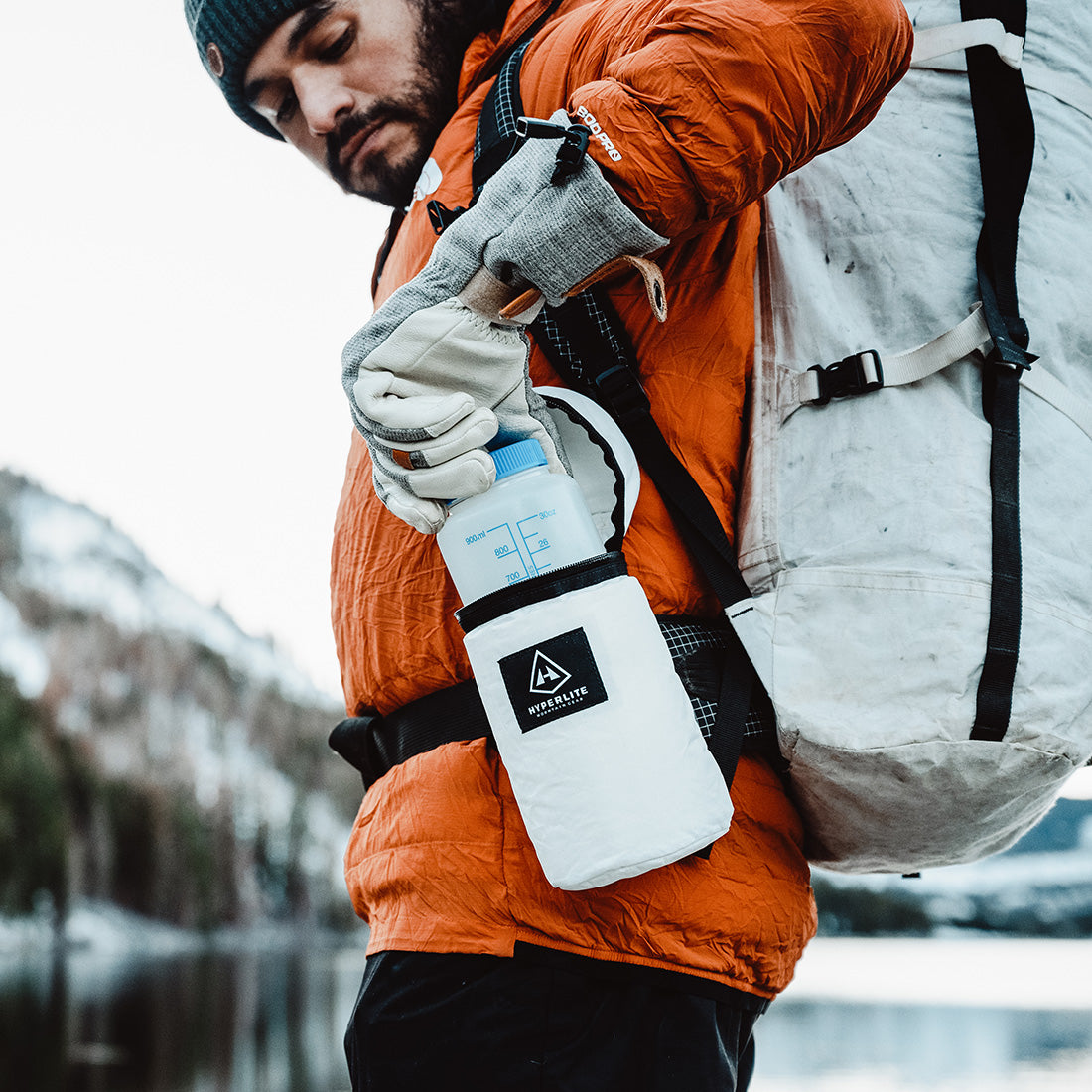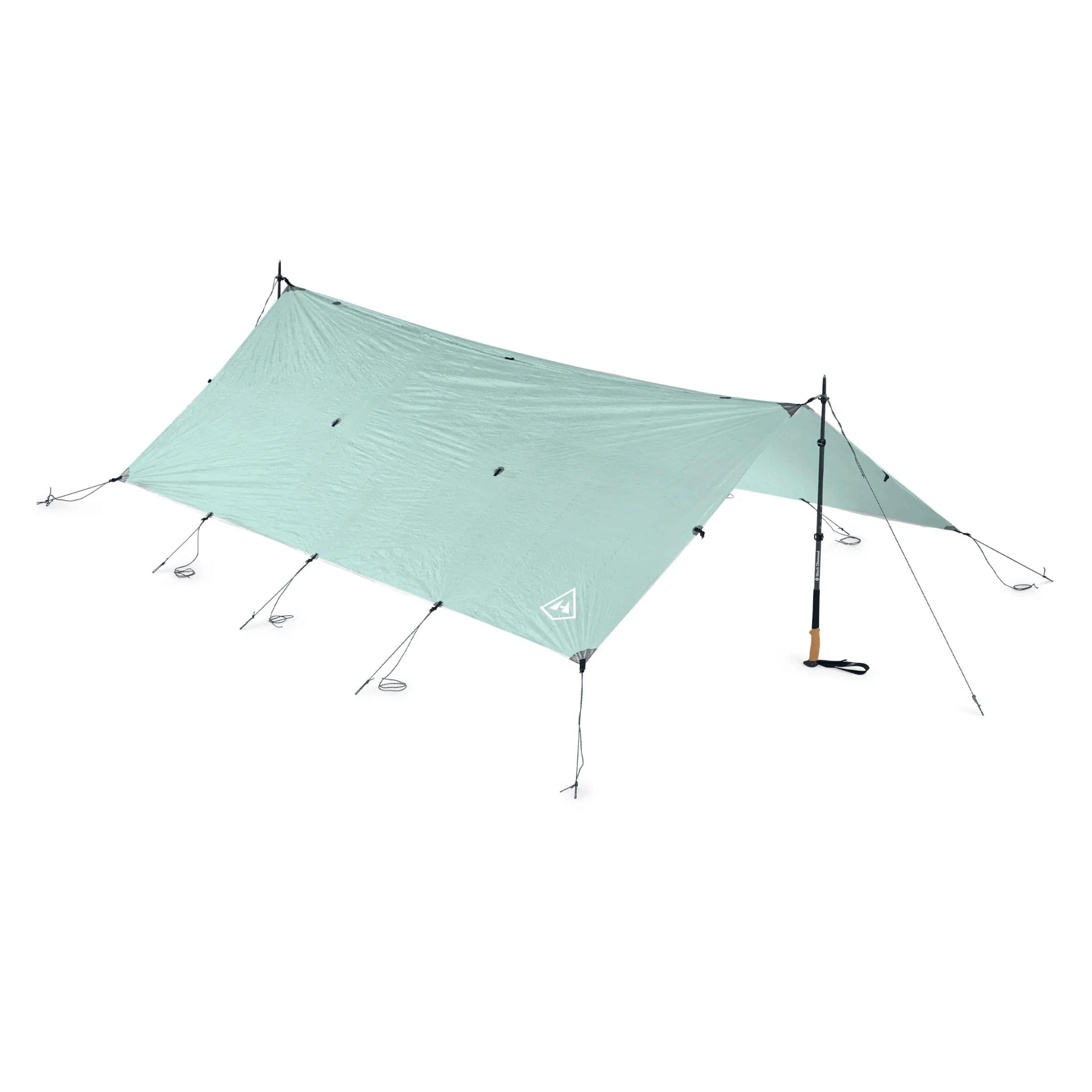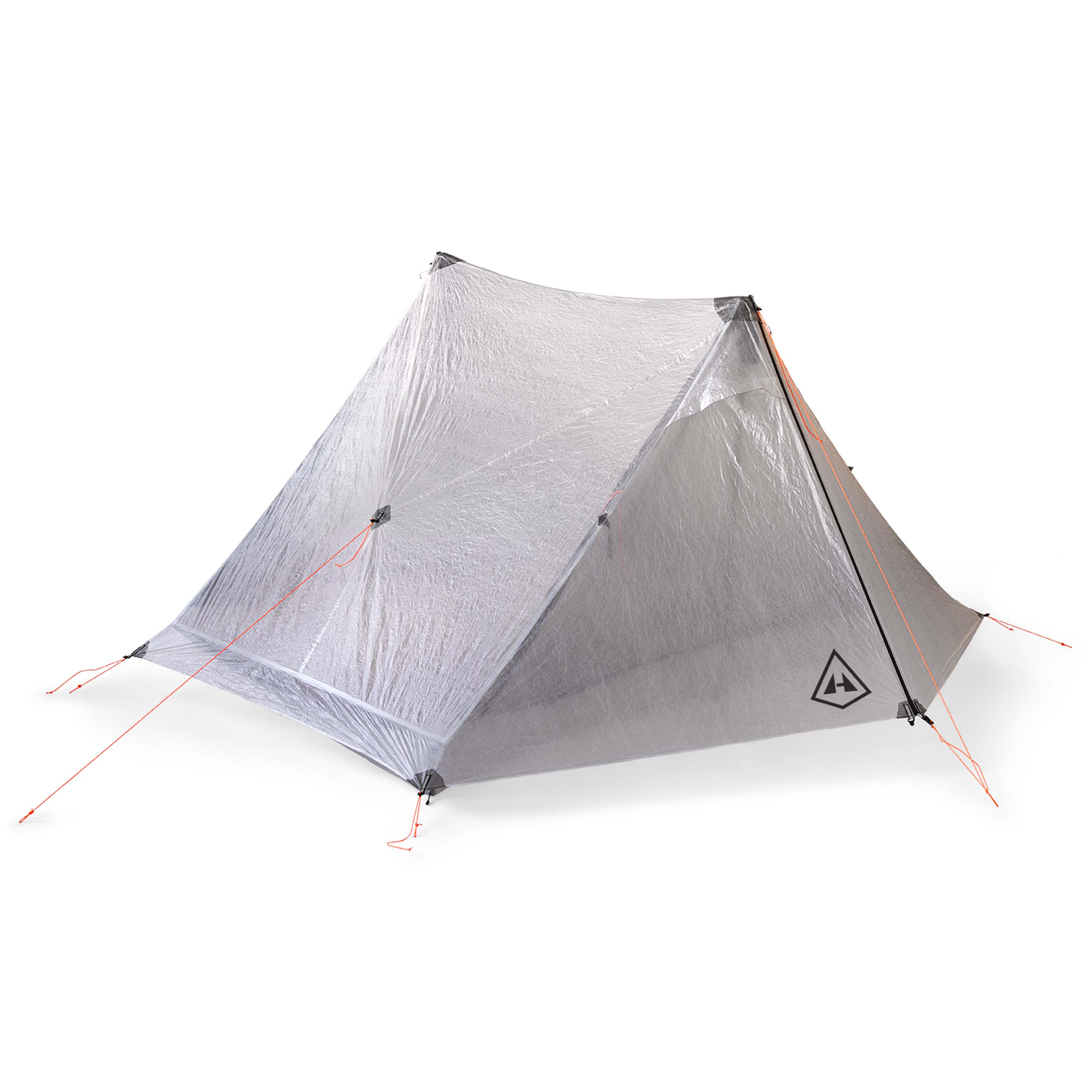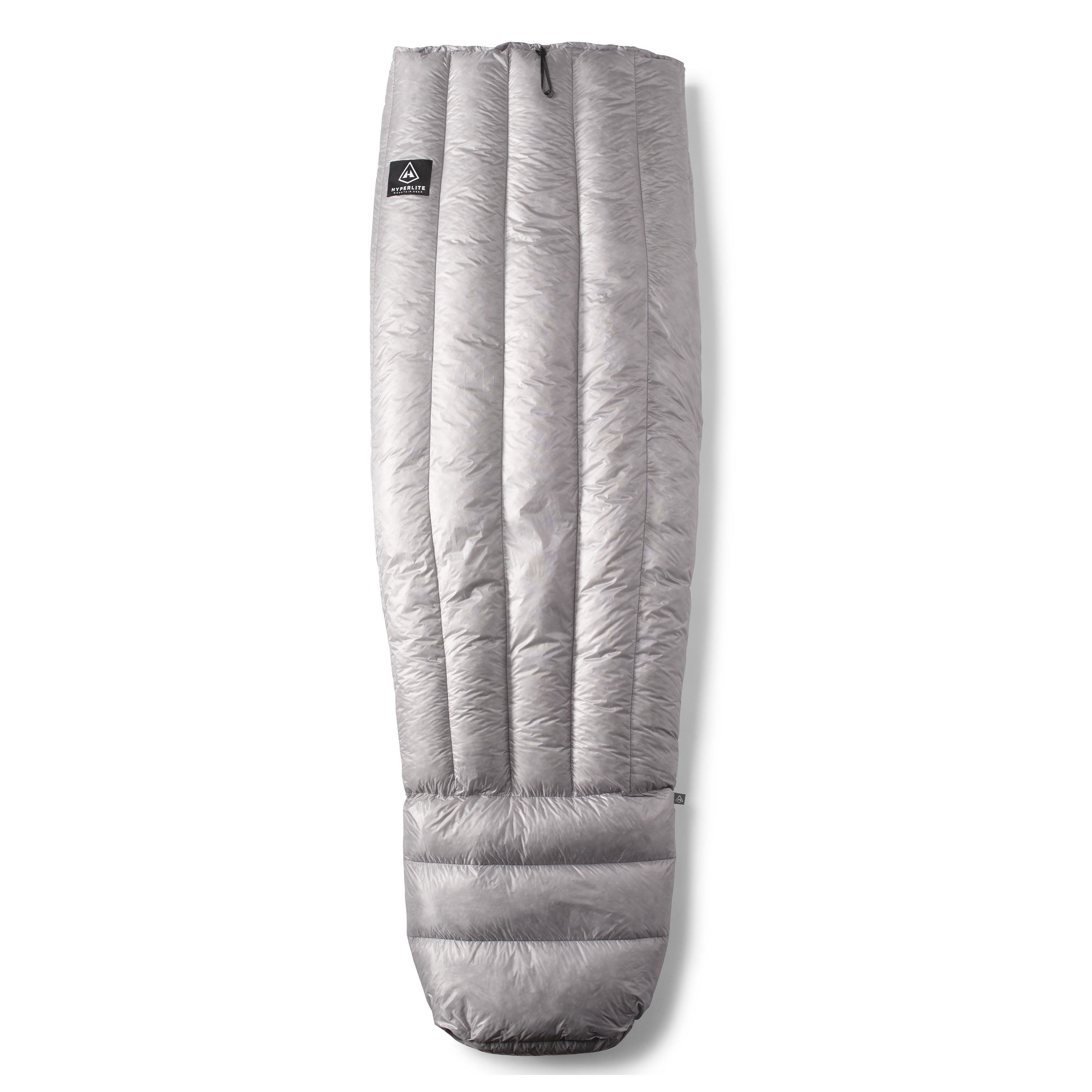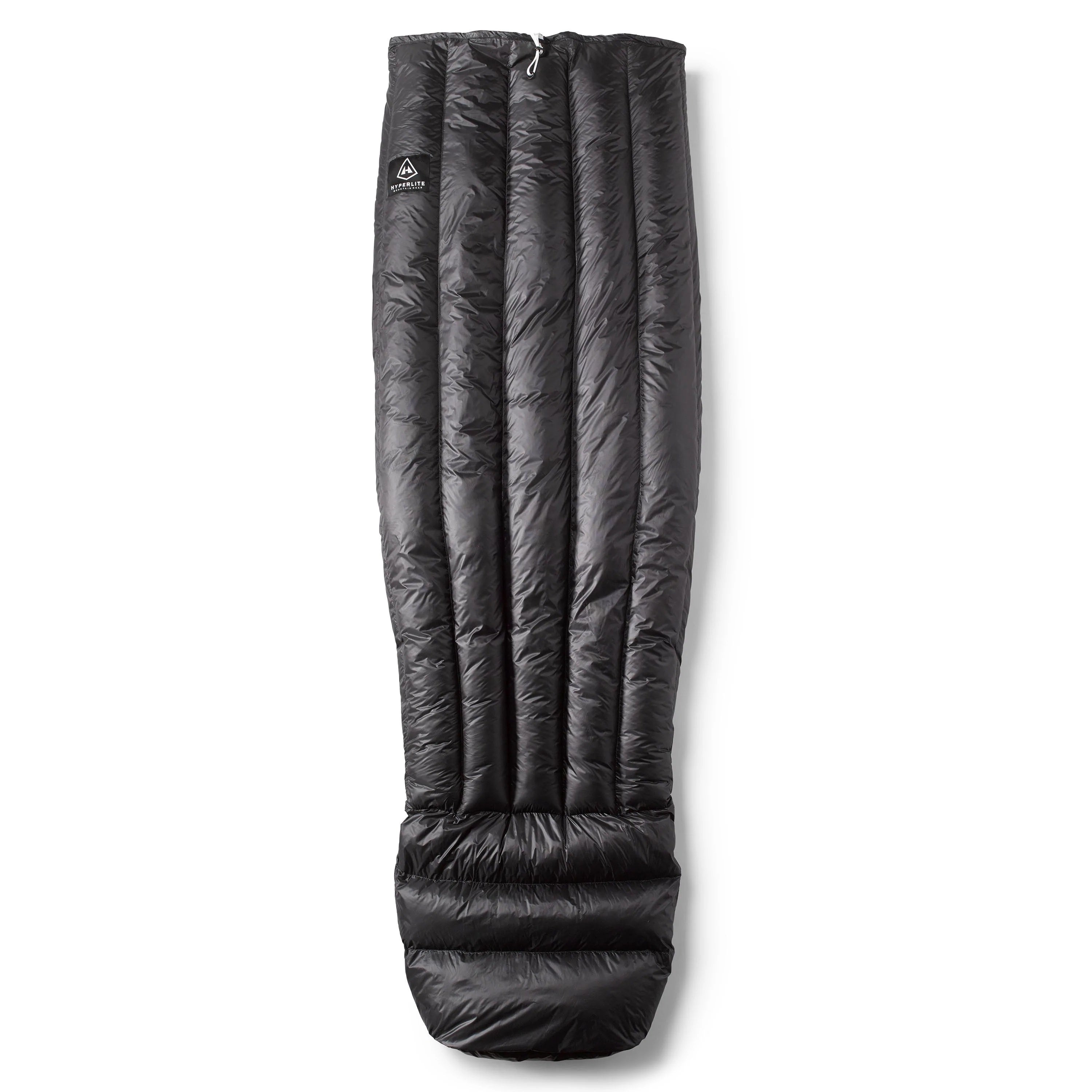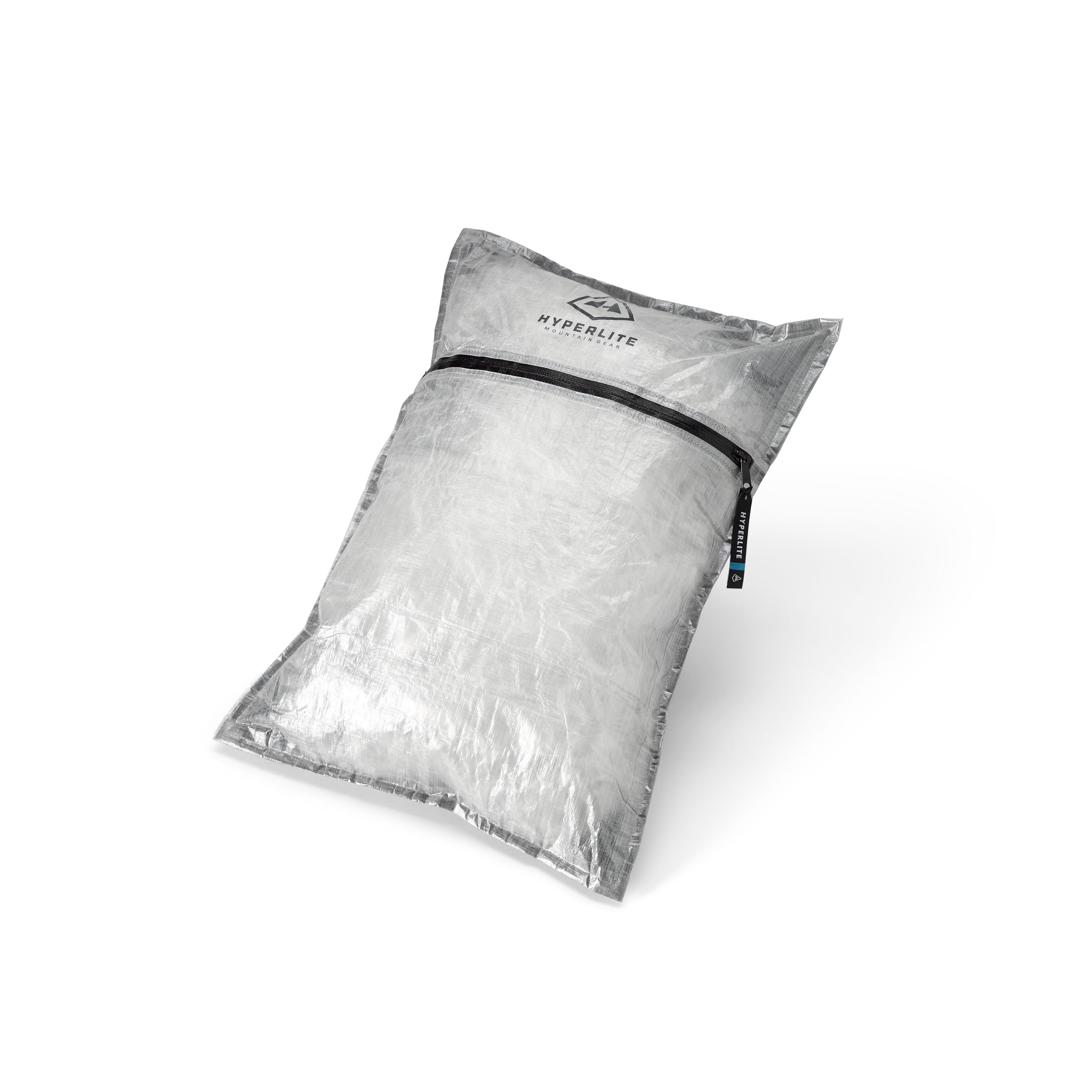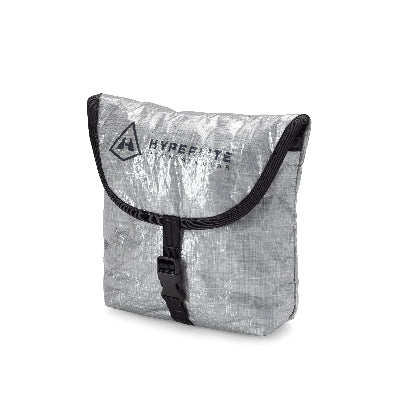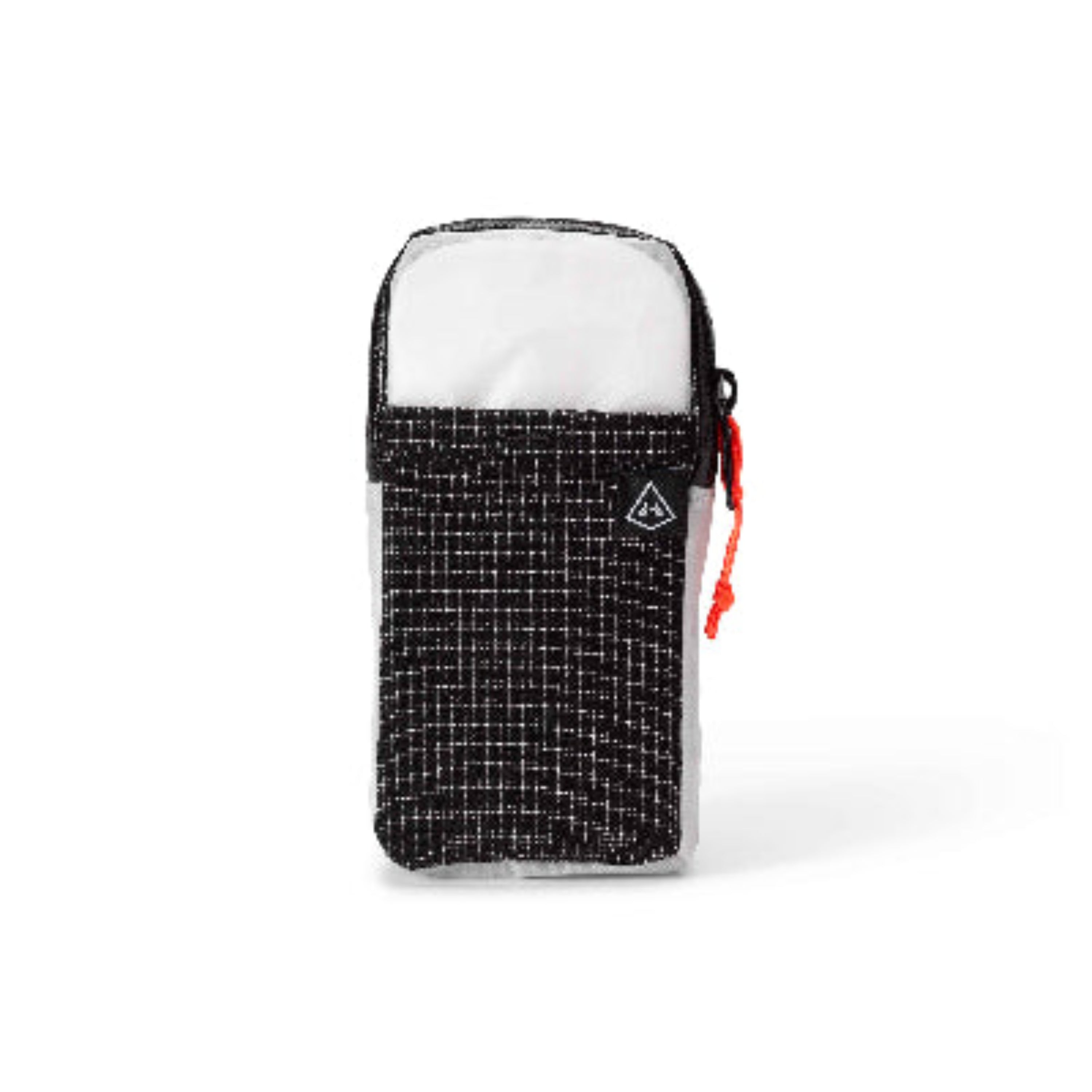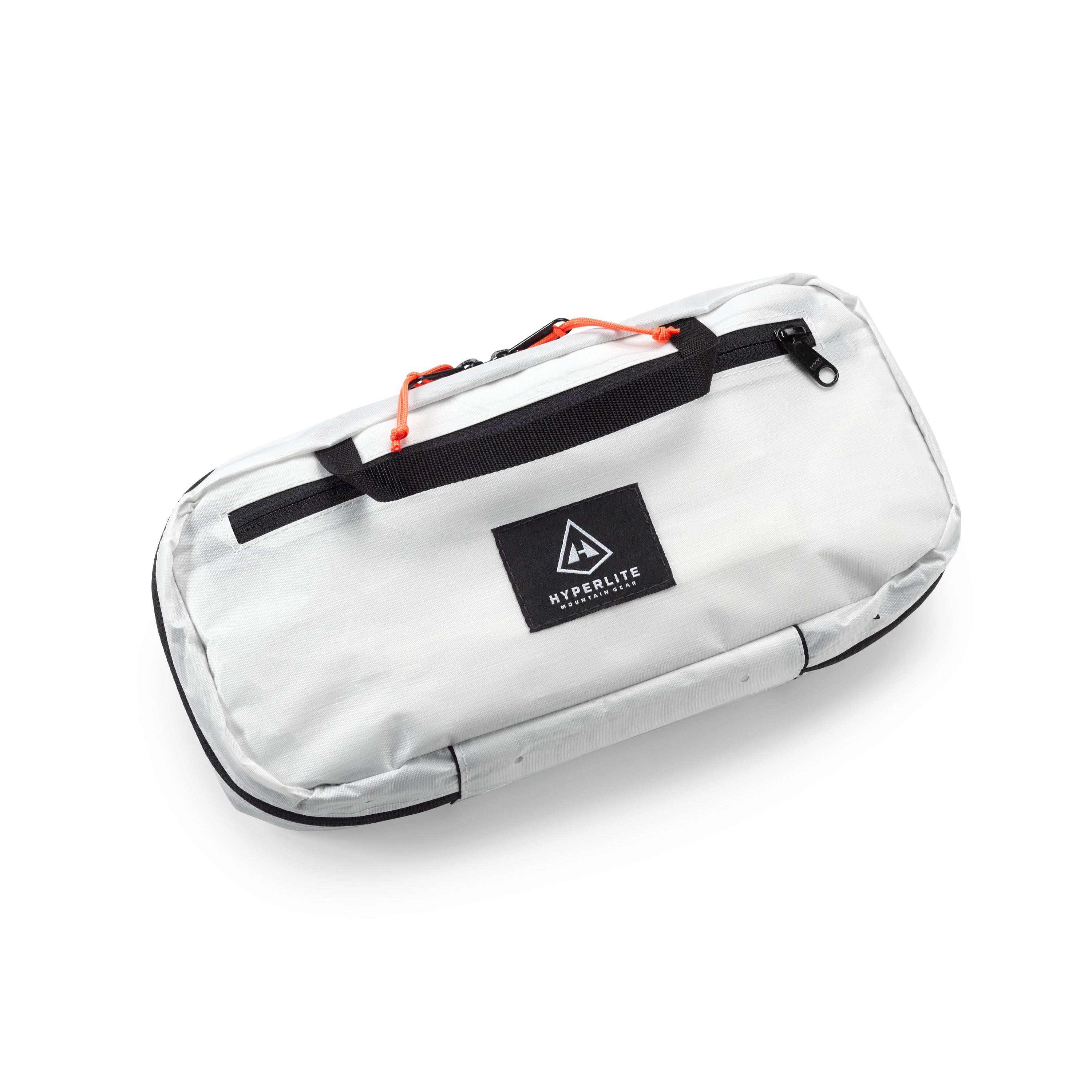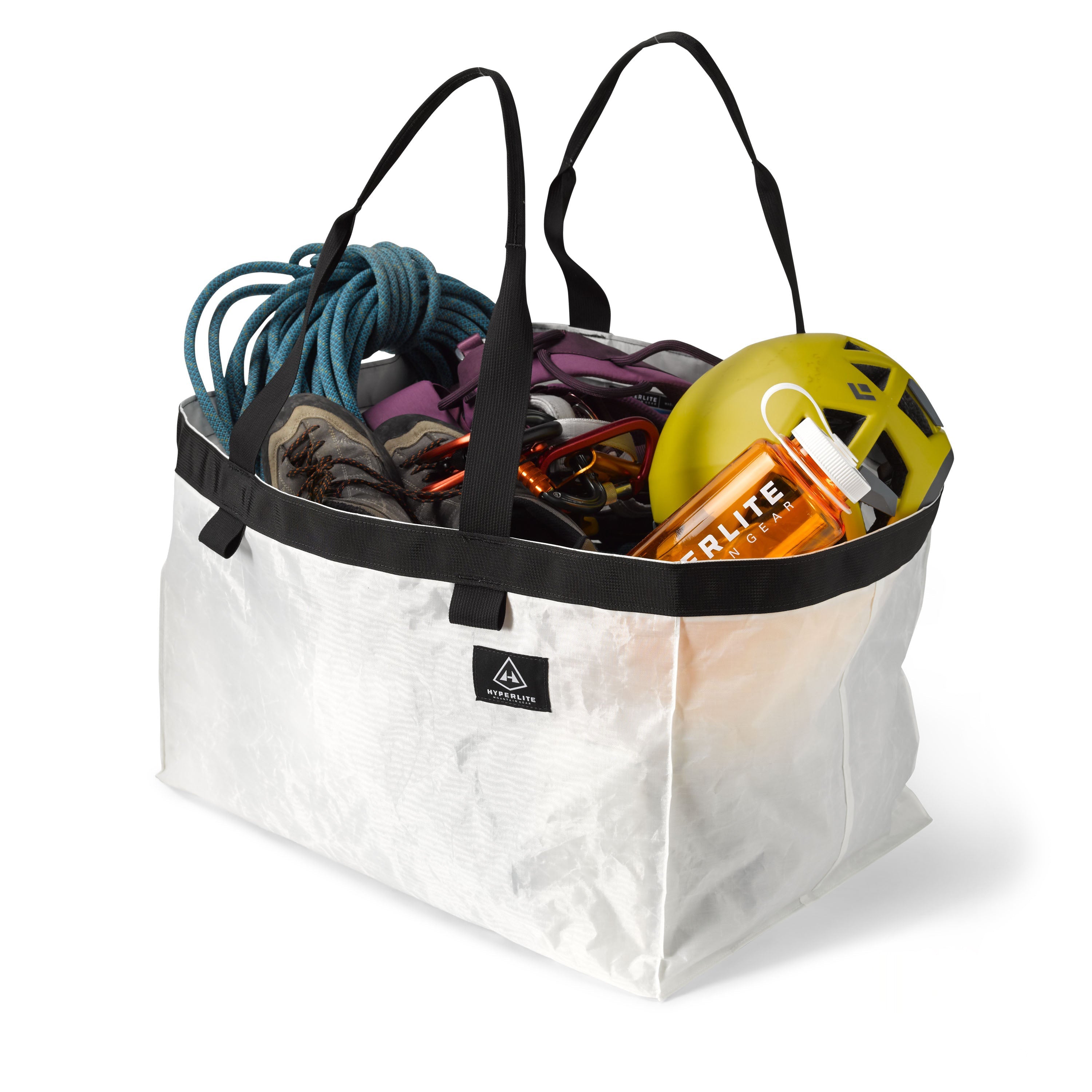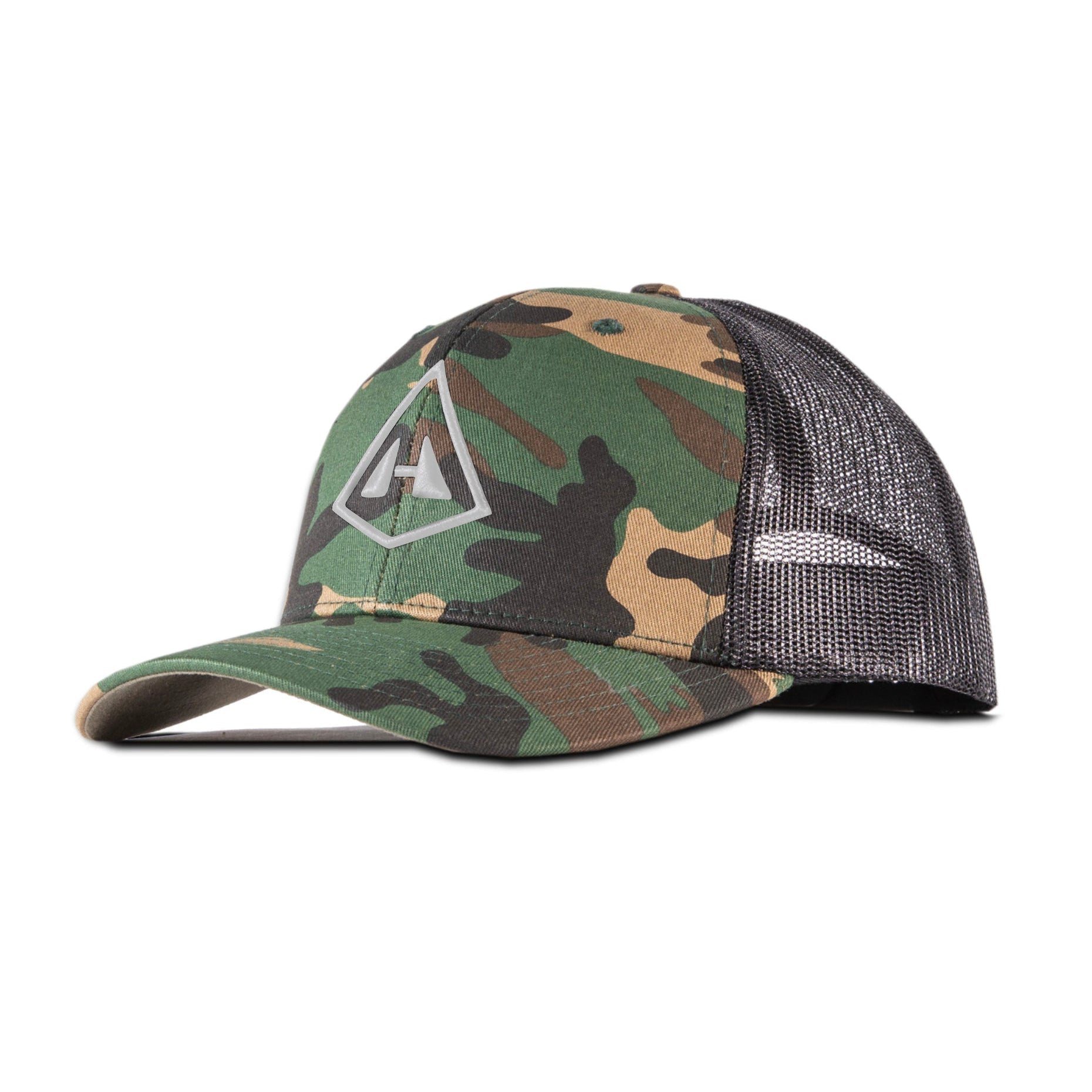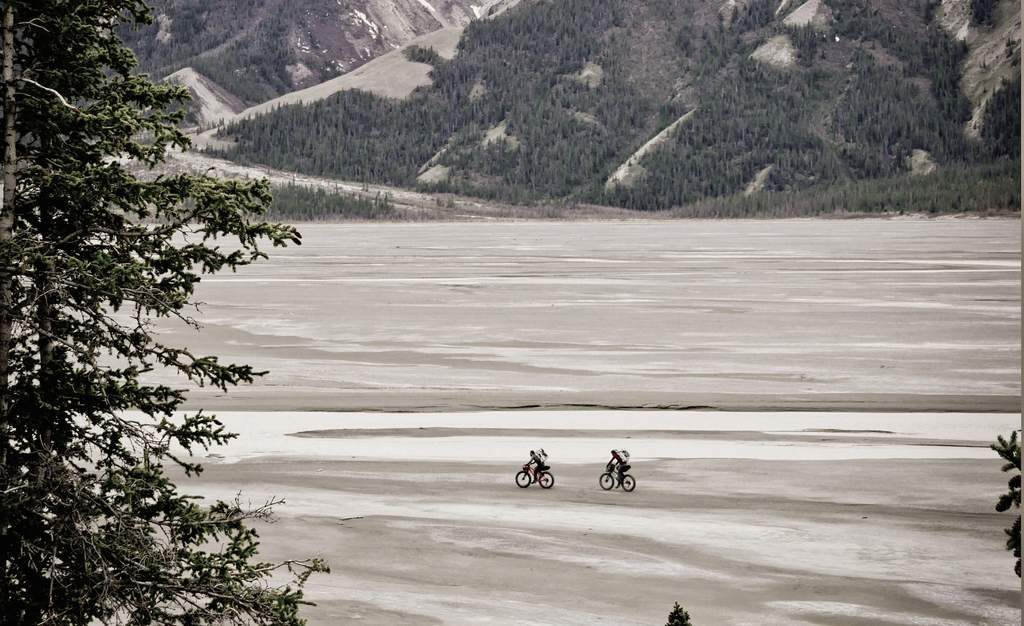To celebrate the launch of the River Rescue Throw Bag, we asked Hyperlite Mountain Gear ambassador Mark Oates to put together a comprehensive guide to technical paddling—call it packrafting 101. A certified whitewater instructor and outdoor educator, Mark regularly leads trips through the remote Tasmanian wilderness near his home zone. Ever detail-oriented and meticulous, Mark produced a thorough treatise on how to get the most out of any day on any creek in your boat, and get home in one piece. Huge thanks to Mark for sharing vital expertise that is sure to make us all smarter and safer as packrafting continues to blow up.
Words by Mark Oates // Photos by Dan Ransom + Mark Oates
You’ve got the latest and greatest packraft, you’ve got the cool hardcore creeking helmet—call it a complete kit—and you even have some decent river miles under your belt. So, now you want to take it to the next level. But wait…
Is there something else that you still need? Why do others make paddling hard rapids look effortless, while you come close to swimming? Why can some packrafters hit that particular eddy every time but you consistently struggle to catch it? How come your friends can easily surf waves for ages, yet you find it challenging to simply paddle across strong currents?
Is it the boat? Is it the river? Is it you? Do you simply need more time on the water?
Experienced packrafters like Hyperlite Mountain Gear ambassadors Mike Curiak and Luc Mehl make it all look easy. In fact, they make it look too easy. The reality behind the jaw-dropping photos, the insane videos and the inspirational stories is actually quite different—it involves serious dedication and commitment. Whether it’s Mike paddling huge volume rivers like the Colorado on a self-supported Grand Canyon winter trip or Luc hucking waterfalls in Mexico, a huge amount of time, thought, energy and purpose has gone into getting them to that level.
Experience and advanced skills are not something that can be gained overnight. In fact, it actually takes years and years of development and a considerable amount of both formal and informal training. If you want to take your own skills to the next level, to paddle harder rivers or even just become a safer paddler, then consider taking the time to deliberately focus on improving your technical, safety and trip planning skills.
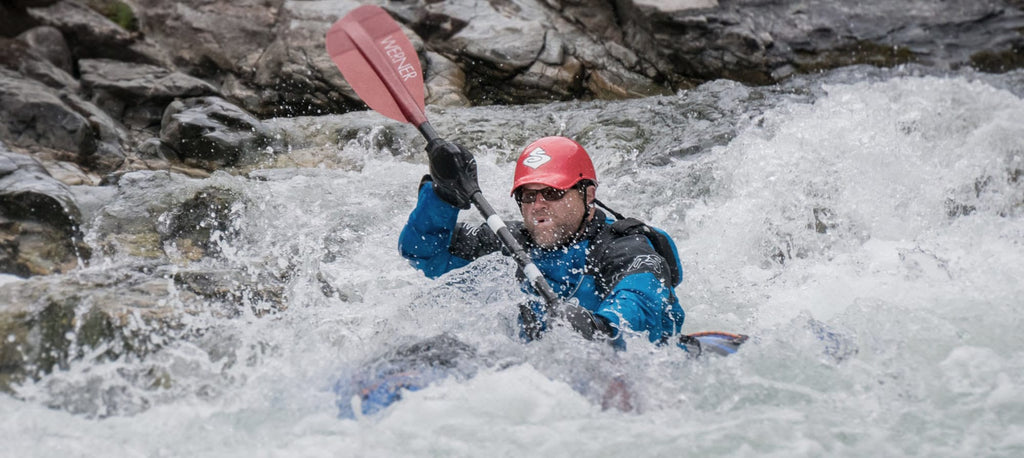
#1 – PADDLE WITH PURPOSE
Most packrafters, and I definitely include myself in this group, are guilty at times of being ‘lazy’ paddlers. Deliberately train yourself to not fall into this category, or at least not too often anyway. Packrafts, with their increased stability and ease of maneuverability, lend themselves to paddlers taking the easy option of minimal effort. For beginners, this is where packrafts shine. However, if you consciously decide to Paddle with Purpose you will be surprised at what can be achieved in a packraft. Being deliberate about the particular strokes you take, the lines you choose, the exact spots you want to hit and the eddies you wish to catch, leads to a significant improvement in boat control. Strive to paddle technically, as a slalom paddler would, and follow the old adage of “Boat, don’t float!” There is a big difference between floating and surviving class IV versus actually technically paddling class IV.
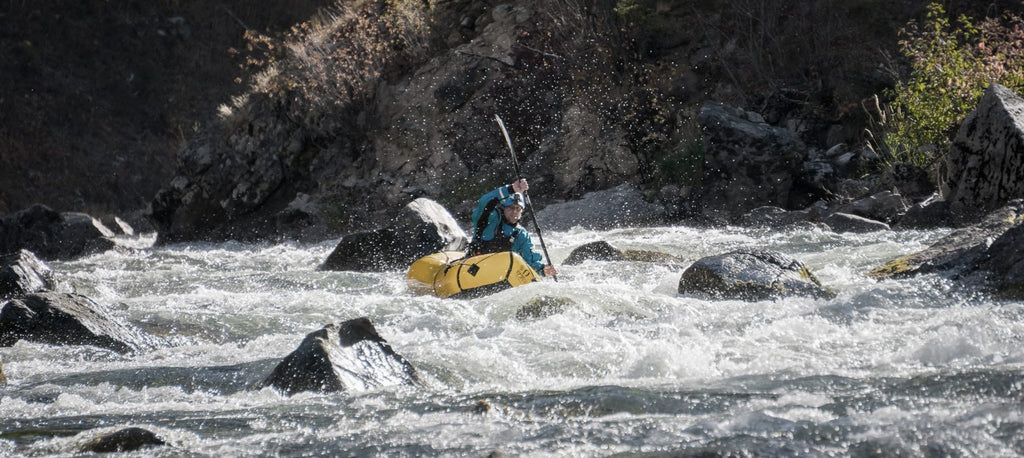
#2 – PADDLE FEATURE TO FEATURE
Advanced whitewater kayakers actually use river features to their advantage rather than being intimidated by them and avoiding them. Don’t look at the end of the rapid or getting through without capsizing as your only goals. Instead break the rapid down into manageable sections and work out how you can use each of the features to your advantage. On technical whitewater sections, go from one eddy to another in order to set up opportunities to maintain control, or regain control if necessary. You don’t actually need to stop in every eddy, but by temporarily catching each one you create infinite opportunities to change your line, your speed and your momentum.
You can also use surf-able waves to slow your movement down the rapid. That way you can position yourself to inspect the features ahead and to protect those behind you. Once you know you can slow yourself down you will have a lot more confidence to tackle lengthy or continuous rapids.
Another tip to make dealing with rapids easier, particularly in big volume water like the Grand Canyon, is to take the inside line. Rivers and rapids are rarely straight and water is pushed to the outside of bends as it moves downstream. You can often avoid the more powerful features by looking to cross the inside lateral waves that line the main tongue of the entry into the rapid. This will allow you to steer clear of the meaty stuff on the outside of the bend.
You can even use the edges of holes to slow yourself down and change your direction of momentum. Also look for features that are going to set you up to ski jump (‘boof’) over hydraulics or large holes. My preference is often to zig and zag my way down a complex rapid by going from a feature on one side of the river to the opposite side on and so on. The advantage of this should become apparent in Tip #3.
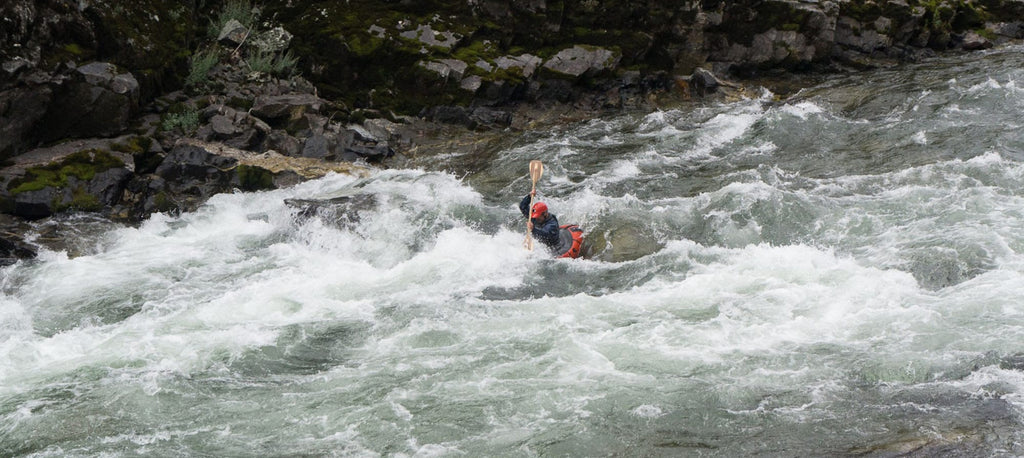
#3 – IT’S ALL ABOUT MOMENTUM
Water has momentum. Your boat has momentum. Use these to your advantage. Remember to always build your momentum so that you can use it to your benefit. If having lots of momentum is going to be a disadvantage then go initially into the rapid slow with minimal momentum. Once you have then discerned the best line, you can then build momentum to set yourself up to take the line.
Many paddlers make the mistake of trying to catch an eddy by starting their approach from immediately above it. When you do this, you are creating downstream momentum that is often parallel to your objective. This downstream momentum is likely to take you straight past your goal. If you find yourself spinning helplessly down the eddy line or regularly washing out from the bottom of the eddy then this is often the cause. It is possible to catch eddies from immediately above but it is challenging as it requires the skill to plant your paddle at just the right time and place and the ability to edge your packraft in order to halt your downstream momentum.
Instead, if you want to catch a large eddy on river left then start your approach to it upstream from the opposite side of the river. By working from river right you build cross current momentum as you paddle, which will drive your boat deep into the eddy.
At the same time, if you want to catch a small mid-stream eddy behind a small boulder, aim to wash off your speed and momentum by the time you cross the first eddy line. Otherwise your momentum may take you straight out the other side of the eddy and you will have missed both it and the opportunity to stop at that particular location. Note that the ability to instantly ‘stop’ yourself moving downstream on a river is a significant safety advantage, not just for you but also for your teammates.
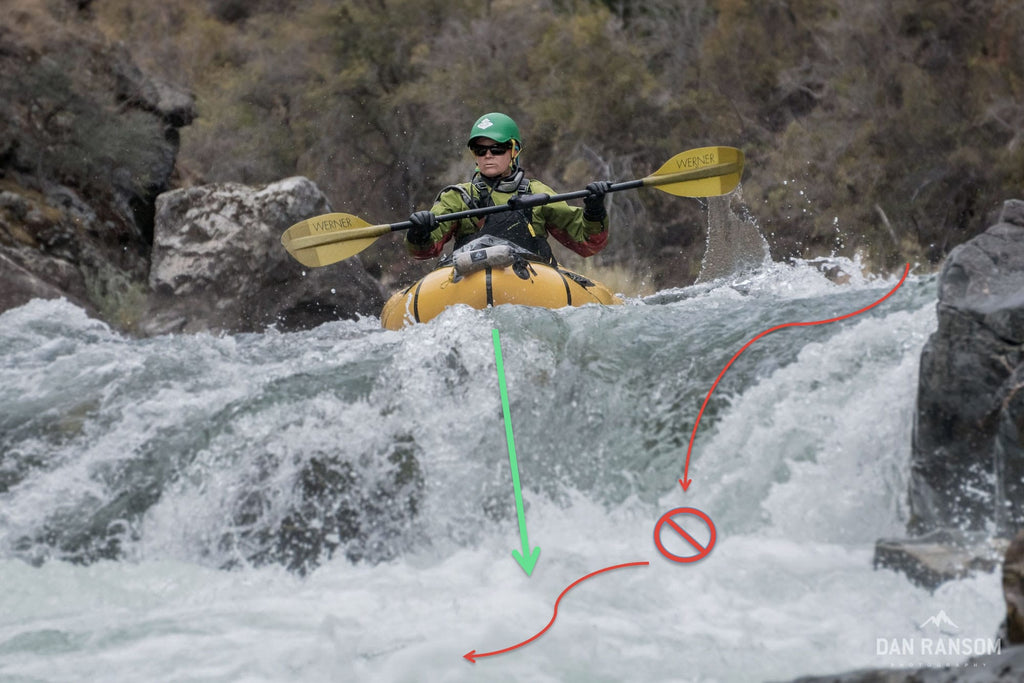
The one time that you do want downstream momentum is when you are about to hit a large hydraulic. Plant your paddle as far forward as you can and drive your boat forward with speed. Try to use your paddle to get hold of the water moving downstream on the far side of the hole so that you can make use of the momentum of this water. When water is moving downstream faster than you and in the direction you want to go then you often do not even need to do a forward stroke. Instead, simply plant your paddle powerfully within this current and hang on for the free ride. Use the current to draw you towards where you want to go.

#4 – CONNECTION IS KEY
In order to paddle technical rapids well, you need your packraft to respond to subtle shifts of your weight and to each and every part of your strokes. If you are not physically connected to your boat you are at the mercy of the water. The primary advantage of this connection is that it allows you to edge the packraft—all the way from a few small degrees, to allowing you to quickly combat roll your packraft if you happen to flip. If you wish to become an advanced paddler the ability to edge is absolutely crucial and it should be one of your primary objectives.
The main way to gain such a connection is to have decent thigh straps or knee cups and a moveable backrest that holds you upright and forward. However, there are a number of other factors that allow an advanced paddler to have exceptional control. A rigid boat equals control whilst a soft boat equals the exact opposite.
These days you can get packrafts made out of stretch resistant fabrics with one-way inflation valves that can be inflated to much higher air pressures than the earlier models. Likewise, many self-bailers are incredibly rigid due to their inflated floors. Having a solid connected to solid packraft means that you are able to create and transfer power between you and your paddle as well as between the boat and the water.
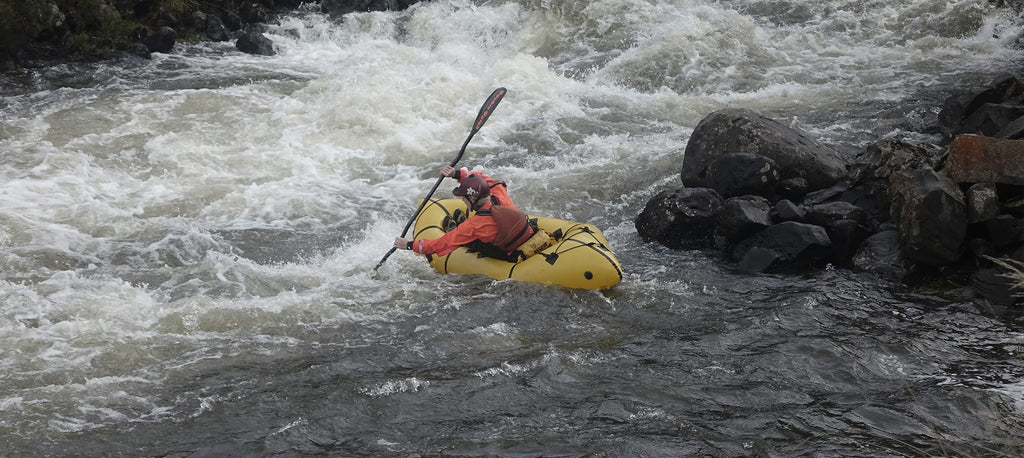
#5 – CONSIDER WHETHER YOU HAVE P.A.S.S.E.D.
If you are struggling at times to cleanly nail eddies or to stay balanced when entering strong currents, then consider whether you have P.A.S.S.E.D.
This acronym allows you to prioritize what you need to think about in order to efficiently enter or exit an eddy with control. It can also be used to set yourself up for the ideal ferry glide or a surf on a wave.
P = POSITION Work out where you want to ultimately end up. Do you want to end up deep in an eddy or do you want to turn close to the eddyline so that you can quickly turn again? Next consider where you initially need to position yourself on the water in order to achieve this. Generally aim to position yourself so that you have space to build cross-current momentum that will drive you towards your end goal. For further explanation on building and using this momentum and where to position yourself, refer to Tip #3.
A = ANGLE Aim to cross the eddy line at an angle of around 45 degrees. If it’s a slow current you can choose to open the angle up slightly. Alternatively, if it’s a super-fast current you may want to reduce your angle of entry—depending again on how quickly you want to turn or where you aim to end up. If you are ferry gliding into an eddy, open up your angle of entry just prior to crossing the eddy line. Otherwise you may not have sufficient angle to drive across it.
S = SPEED Think about how much speed you need to cross the eddy line. The wider and stronger the eddy line, the more speed is needed to cross it. When followed up with the appropriate stroke you can quickly turn forward speed into a carved turn (see Tip #6) that will have you turning on a dime. At other times you may want to enter with minimal speed, such as when ferry gliding or setting yourself up to surf a wave.
S = STROKES Using the right stroke at the right time will set you up to turn quickly or allow you to slow your turn if required. See Tip #7 for comments on mastering such strokes. Using the correct stroke will also help to stabilize you and to set you up for your next move. From teaching packrafting to others I have found that the easiest sequence of strokes to master when tying to catch a large eddy is to actually do two or three forward strokes, but only on the inside of the turn. For example, to catch a large eddy on river left, use two forward strokes on your left as soon as you have crossed the eddy line. This seems counter-intuitive but when combined with aggressive edging it works incredibly well as it gets you away from the eddy line and more into the middle of the eddy. See Tip#6 for further explanation.
E = EDGING If you always paddle your packraft flat to the water then you are missing out. Many packrafters get away without edging their boats, but putting the time into learning this skill will change your paddling completely. Edging allows your boat to ‘grab’ the water. When moving with speed into an eddy, or into the main current, the more you edge the packraft the more quickly you will turn. This is a big advantage if you are trying to catch tiny eddies on a fast flowing river. Edging also reduces the chance of catching your edge and of ‘tripping up’ and losing your balance. You can only edge though if you are connected to your boat (see Tip #4) and it is a skill that takes practice. Failure to edge in a packraft can result in you ‘drifting’ or ‘sliding’ straight through a mid-river eddy and out the other side.
D = DEPTH Consider how deep, or how far into, the eddy you want to go. Do you want to do a quick turn and then head off again very quickly downstream or do you want to drive deep into the back of an eddy to come to a complete stop? Likewise, when entering currents, consider how deep you want to go across the current before you turn. Many packrafters try and turn too quickly, often without edging. The result is a spin on the spot, edges getting grabbed, balance and speed lost. If you turn too quickly you can easily end up turning on the eddy line rather than in the main current or in the actual eddy. This is not ideal since eddy lines are areas (and indeed sometimes quite large areas) where confusing water currents grab the boat from all angles. Always try to make sure that you get fully across the eddy line before turning.
Although ‘depth’ is the last thing you deal with when catching an eddy or entering the main current, it is also actually the first thing you think about when you consider your end position and your start position. The amount of depth that you want to go into the eddy or main current actually determines your position, angle, speed, strokes and degree of edging.
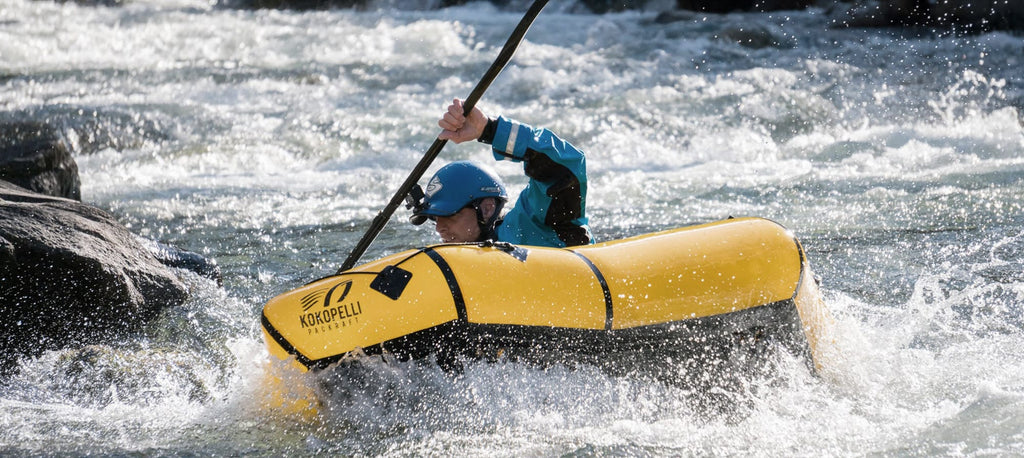
#6 – CONTROL YOUR TURNS
Packrafts turn almost too easily and as a result a lot of less experienced paddlers get caught in the confused water either side of eddy lines. As such, new paddlers end up feeling unbalanced and out of control a lot of the time. It can make it difficult to catch eddies well or enter the main current cleanly. On fast flowing rivers you actually need to counteract the boat’s natural desire to turn on the spot. This allows you to drive either deeper into the main current or deeper into the eddy—both of which will give you more control and improve stability.
The advanced method for controlling your turns is to learn to carve them. Yes, packrafts can carve! That is, if they are paddled at sufficient speed and appropriately edged with the right strokes. A carved turn can be used to turn ridiculously quickly in a tight spot or to drive yourself deep into or out of an eddy. For the former, aggressively edging the boat while putting in a bow rudder allows the boat to do a quick carve turn. Alternatively, if you wish to go deep, try double or triple paddle strokes only on the inside of your turn while edging the boat at the same time. The advanced version of the latter is to initially hold a stern draw and then finish with a stern rudder, all while maintaining a decent edge.
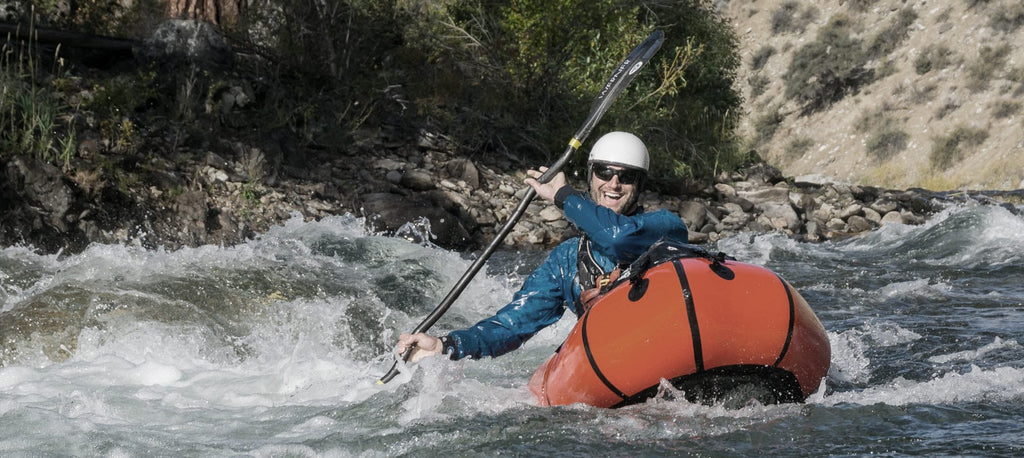
#7 – MASTER TECHNICAL STROKES
If you wish to become an advanced whitewater paddler then you will benefit from consciously working on mastering a range of specific strokes. Technical paddling strokes deliver maximum efficiency and power while keeping you balanced in the boat. Learn strokes like hanging draws, the bow draw, bow rudder, the stern draw and stern rudder and the C-stroke. Likewise practice braces such as low supports, and don’t forget to focus on your forward paddling technique—an often overlooked area for improvement. Learning to forward paddle only on one side (the inside of your turn) whilst simultaneously edging the boat is a skill worth mastering.
By doing the appropriate stroke at the right time you will not only stay upright, you will also be able to turn on a dime. If you wish to turn super quickly, master the bow draw. Conversely, there are often times when you don’t want to turn too quickly and for this a subtle stern rudder works well. Once mastered this particular stroke will allow you to drive yourself deep into the back of an eddy or a long way across the main current after exiting an eddy.
Be very wary of using large reverse sweeps as these often negatively impact upon your position. They are great if you simply want to turn on the spot and have no downstream momentum. However, when moving downstream and fully applying this stroke, although your bow is turned back upstream or away from the downstream danger, you created momentum that pushes your stern downstream even faster, to exactly where you do not want to go.
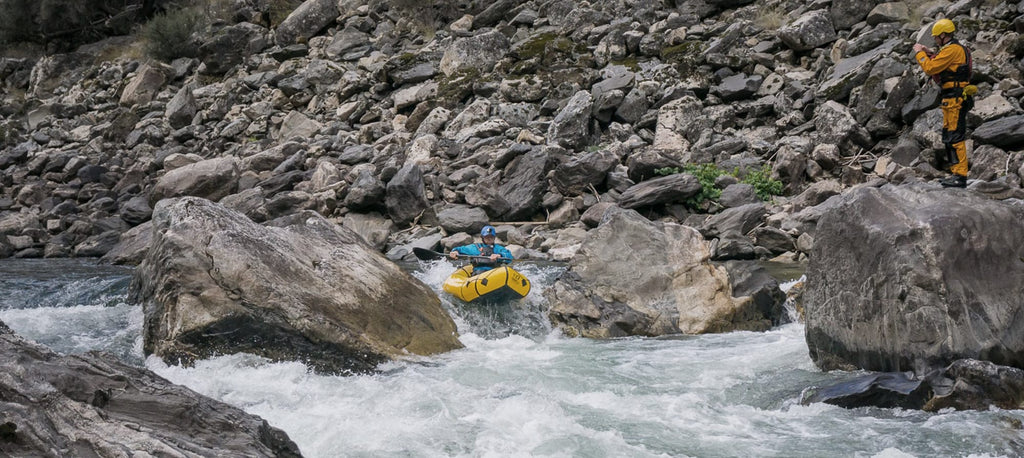
#8 – LEARN TO BOOF
To ‘boof’ is to lift the bow of your packraft and to drive the boat forward at the same time. A good boof allows you to jump hydraulics or holes as well as to drive over the top of submerged rocks and into eddies. Boofing also allows you to clear the bottom of large drops which keeps you from going deep and potentially getting caught in the backwash of the hydraulic at the bottom or from hitting a submerged object. The opposite to boofing is diving, traditionally a common problem with early packrafts, and often seen in early packrafting videos. This is particularly because the short, soft boats would get driven deep underwater at the base of a drop due to the weight of a heavy pack on the bow and the lack of rigidity in the tubes.
Mastering the boof will get you out of a whole lot of trouble. The ability to keep your bow up allows you to retain control of your boat rather than having the current decide which way to send you.
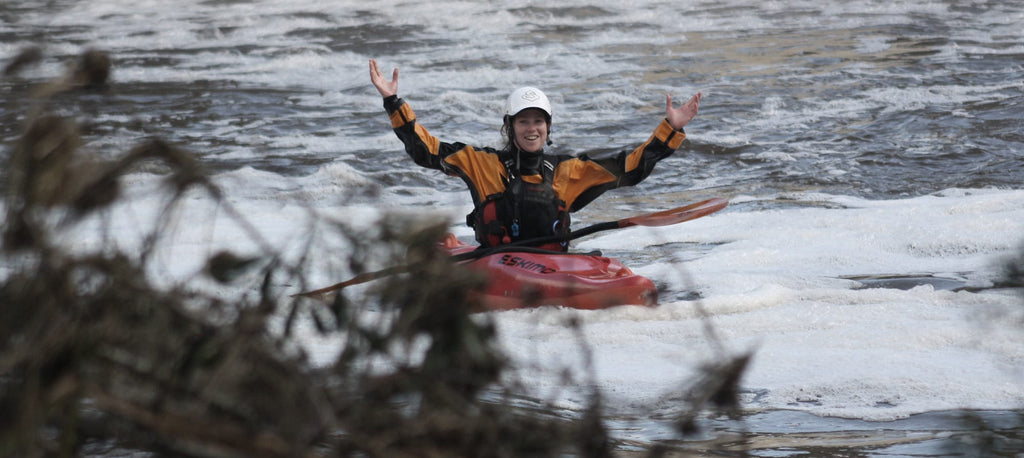
#9 – TAKE KAYAK LESSONS
Absolutely the best way to improve your technical whitewater paddling skills is to spend some time in a kayak under the tutelage of a qualified whitewater kayaking instructor. You will make significant progress in an incredibly short amount of time. Ideally, sign up for a two or three-day or even a week-long course. Everything you learn in a kayak will be valuable for your time in a packraft.
Sometimes it seems that packrafters are trying to reinvent the wheel when it is completely unnecessary. Kayakers have been paddling serious whitewater for decades and they have learned a few things along the way. Packrafters would do well to embrace the lessons that both kayaks, and kayakers, can teach.
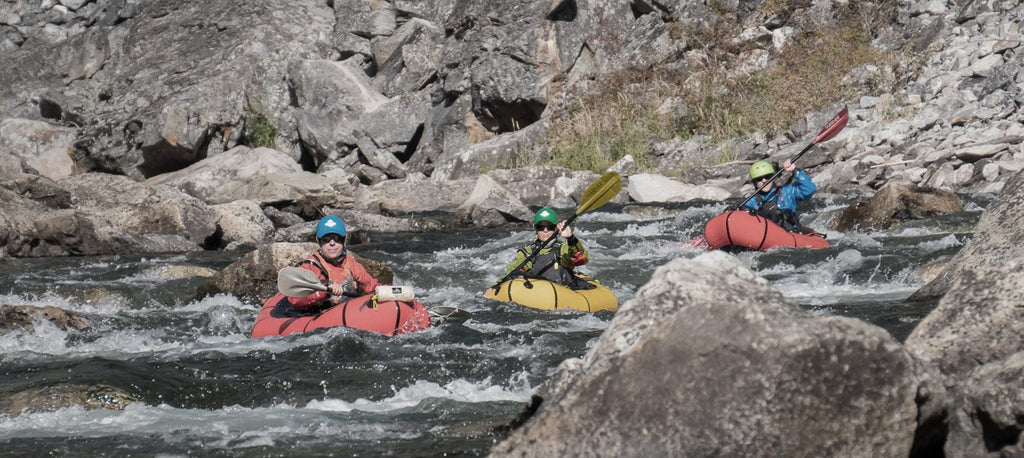
#10 – BUILD A TEAM & THEN PADDLE AS A TEAM
One of the most enjoyable aspects of whitewater paddling for me is the teamwork involved. Working with others to overcome challenging, often unknown and sometimes potentially dangerous situations creates an incredibly rewarding and powerful experience. As mentioned in the previous blog on ‘10 Tips to keep you safe on whitewater’ “when things go wrong the outcome is often determined by the team that you have around you.” Thus, make sure you have a great team around you! And, if you don’t already have one, then build your own team.
The best way to achieve this is to find like-minded paddlers with similar goals who are keen to deliberately train and paddle together and support each other. Technical paddling skills, safety and rescue skills, river communication, group management, gear knowledge and trip planning skills all take time to learn but are equally worth it.
Once you have a team, paddle as one! Watch out for each other by always knowing where everyone else in the group is. Position yourself and your team members so that you can protect each other. Consciously set safety on rapids and talk about how the group will deal with incidents before they actually happen. What you will be able to achieve as a team will be far greater than what you can achieve as an individual.
The best thing about consciously working on developing these ten strategies to improve your paddling is that ultimately they will not only help to make you more proficient paddler they should also make you a safer paddler.
Stay Safe and Happy Boating!



